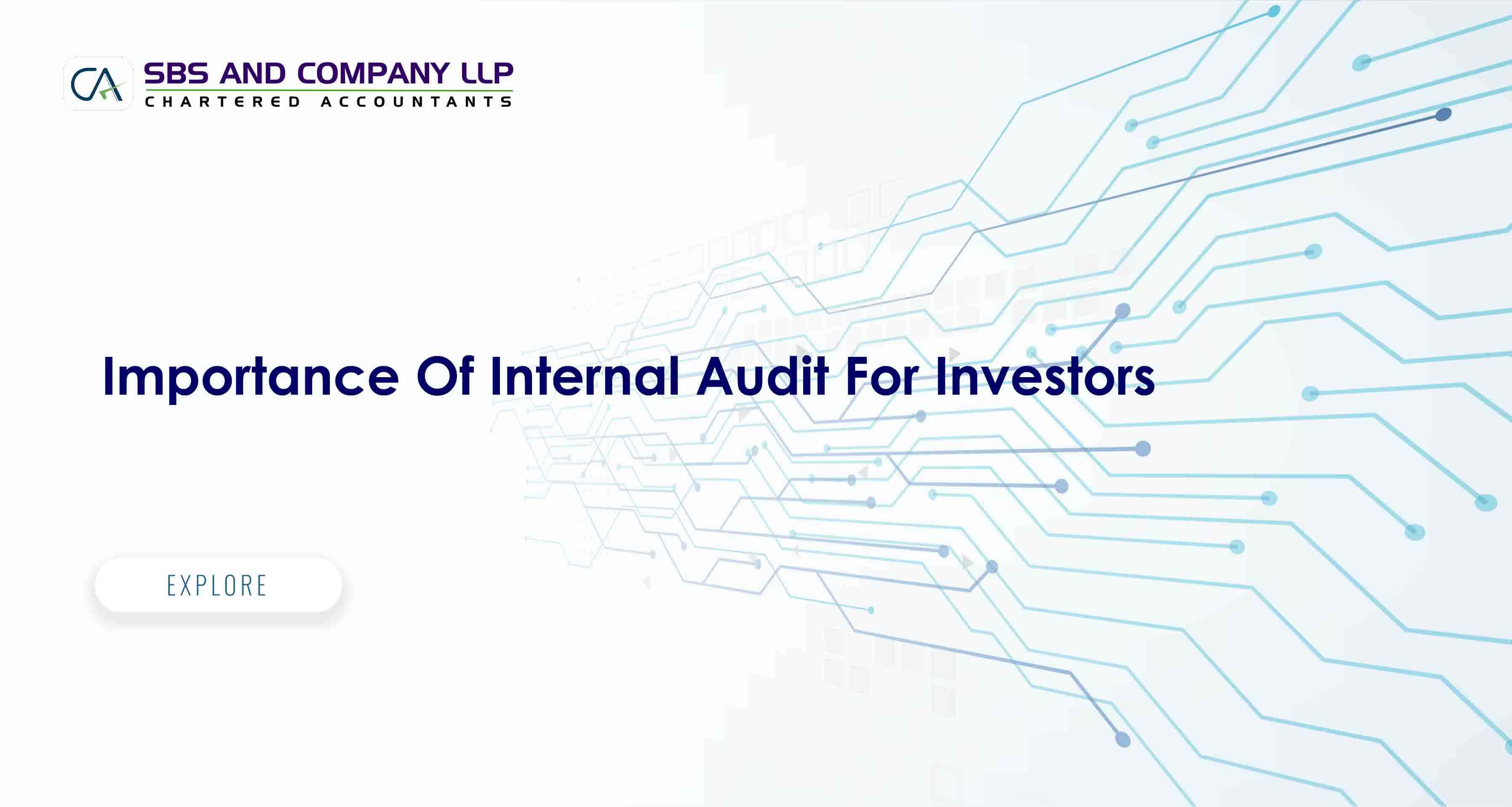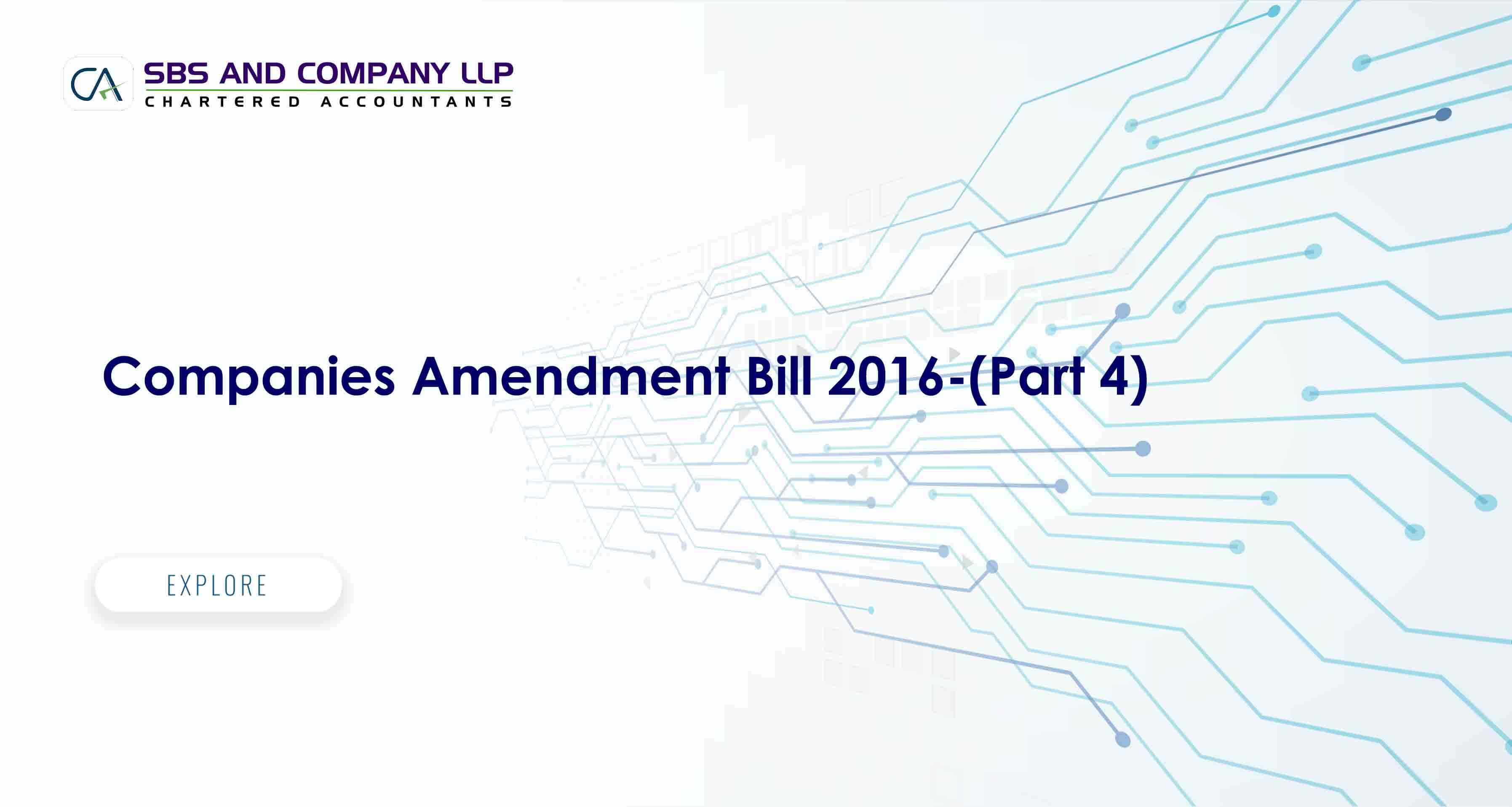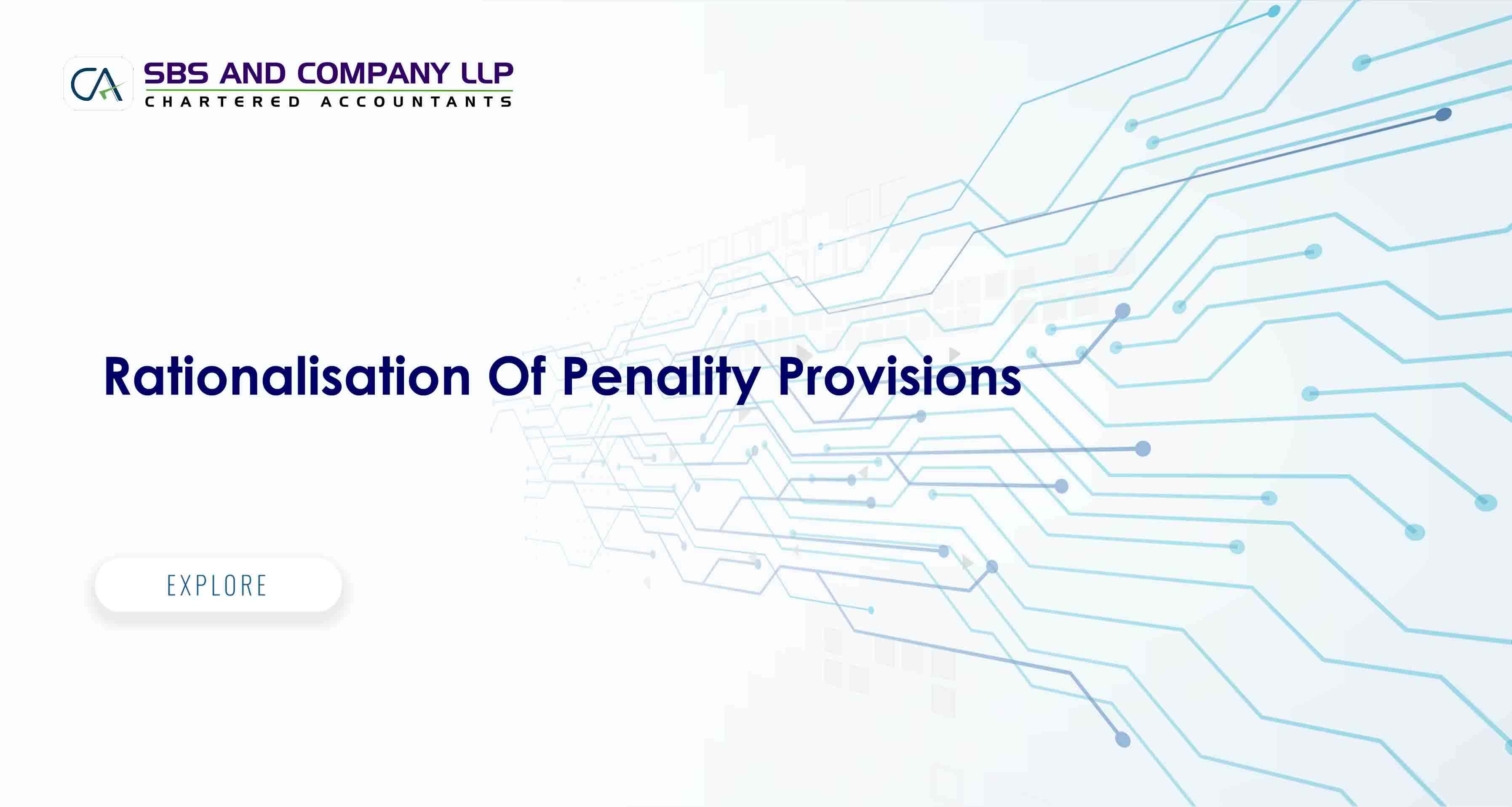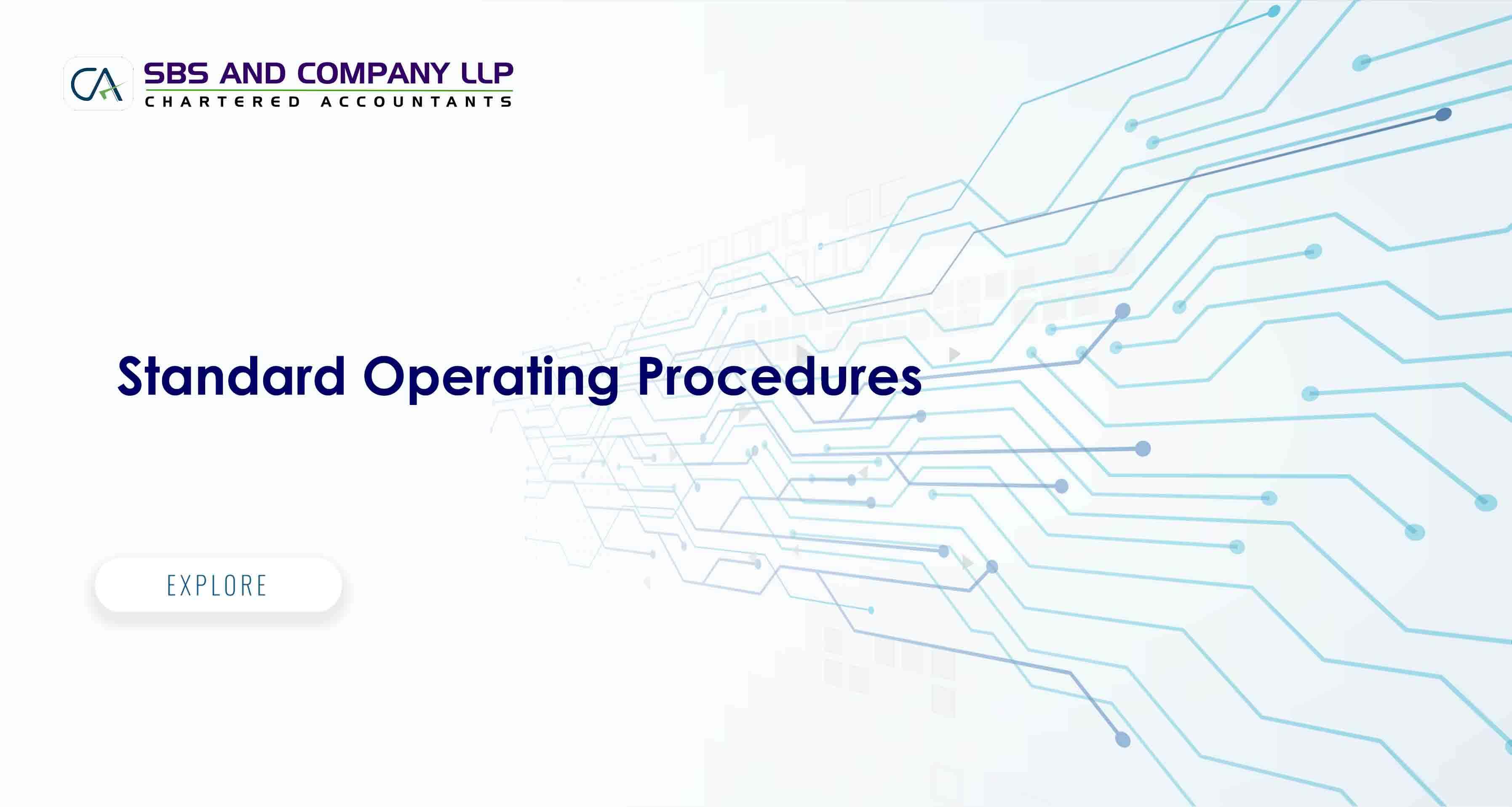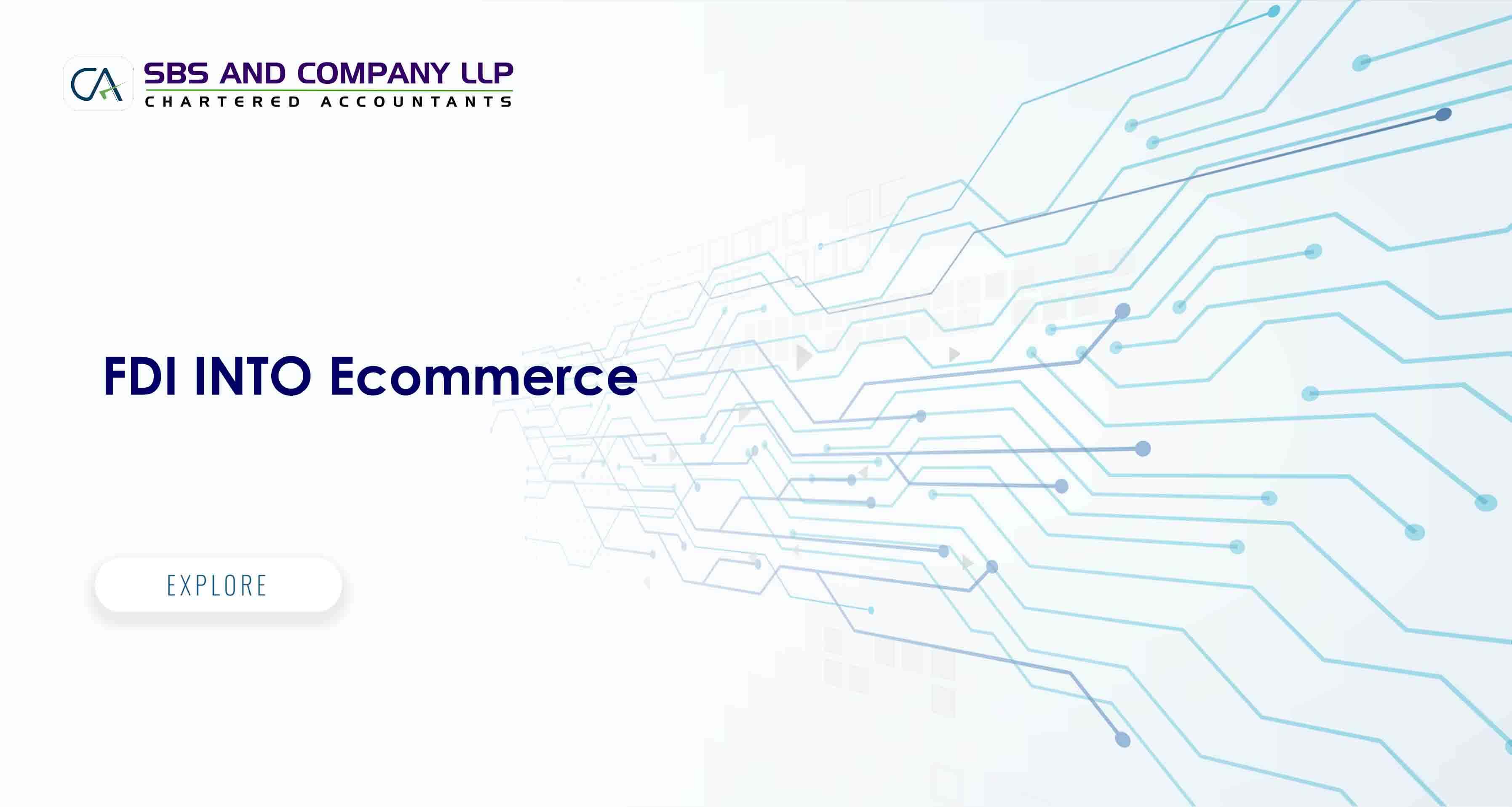The Finance Bill, 2016 proposed to insert a new section – section 270A on imposition of penalty to replace the existing section 271of the Income-tax Act, 1961 (“Act”) which has been matter of litigation throughout. This section shall come into effect from April 1, 2017 i.e., Assessment Year (“AY”) 2017-18.
The reasons for bringing in a new section, as stated in the Memorandum explaining the Finance Billis - “Under the existing provisions, penalty on account of concealment of particulars of income or furnishing inaccurate particulars of income is leviable under section 271(1)(c) of the Income-tax Act. In order to rationalize and bring objectivity, certainty and clarity in the penalty provisions, it is proposed that section 271 shall not apply to and in relation to any assessment for the assessment year commencing on or after the 1stday of April, 2017 and subsequent assessment years and penalty be levied under the newly inserted section 270A with effect from 1stApril, 2017. The new section 270A provides for levy of penalty in cases of under reporting and misreporting of income”.
Purpose for bringing a new section:
The existing provisions of Section 271of the Act is for levy of penalty in case of concealment of income or furnishing of inaccurate particulars of income which can range from 100 percent to 300 percent of the amount of tax sought to be evaded by an assessee. The levy of penalty under this section has always attracted huge litigation. The discretion regarding the quantum of penalty that can be imposed lies in the hands of Assessing Officer which also led to corruption. Major litigation under this section has been on the following issues:
- The interpretation of the term – ‘tax sought to be evaded’;
- The tax authorities considered any addition or disallowance made in the course of assessment would attract the levy of penalty under section 271(1)(c);
- The rate of penalty has always been upto the discretion of the tax authority etc.
To overcome all the shortcomings of this section and to reduce litigation to some extent, the Finance Bill, 2016 proposed the insertion of Sections 270A and 270AA in the Act which will replace the existing provisions of section 271.
Section 270A:
The section 270A of the Act imposes penalty for under reporting and misreporting of income. It states that:
- The Assessing Officer / Commissioner (Appeals) / Principal Commissioner or the Commissioner may
- During the course of any proceedings under the Act
- Direct that any person
- Who has under-reported his income
- Shall be liable to pay penalty in addition to tax, if any, on the under reported income
12| P a g e
SBS Wiki www.sbsandco.com/wiki
In a nutshell, the concept of ‘concealment of income or furnishing of inaccurate particulars of income’ mentioned in section 271(1)(c) has been replaced by under reporting and misreporting of income which has been clearly defined in the section.
What constitutes under-reporting of income?
Sub-section (2) of section 270A lists the cases wherein a person is said to have under reported his income which are mentioned below:
- the income assessed is greater than the income determined in the return processed under clause (a) of sub-section (1) of section 143;
- the income assessed is greater than the maximum amount not chargeable to tax, where no return of income has been furnished;
- the income reassessed is greater than the income assessed or reassessed immediately before such re-assessment;
- the amount of deemed total income assessed or reassessed as per the provisions of section 115JB or 115JC, as the case may be, is greater than the deemed total income determined in the return processed under clause (a) of sub-section (1) of section 143;
- the amount of deemed total income assessed as per the provisions of section 115JB or 115JC is greater than the maximum amount not chargeable to tax, where no return of income has been filed;
- the income assessed or reassessed has the effect of reducing the loss or converting such loss into income.
The most important point to be noted here is that in case of the assessee who has reported a loss in his return of income, penalty will be charged on the amount of tax on the under reported income inspite of the assessee still having a loss after including the under reported income. Due to this provision, any income which is being under reported by the assessee will fall within the purview of penalty (excluding certain circumstances mentioned below) even if the assessee has an overall loss.
What constitutes misreporting of income?
Income is said to be misreported in the following cases:
- misrepresentation or suppression of facts;
- failure to record investments in the books of accounts;
- claim of expenditure nor substantiated by any evidence;
- recording of any false entry in the books of account;
- failure to record any receipt in books of account having a bearing on total income and
- failure to report any international transaction or any transaction deemed to be an international transaction or any specified domestic transaction to which the provisions of Chapter X(Special provisions relating to avoidance of double taxation) applies
13 | P a g e
|
Rationalisation of penalty provisions
|
SBS Wiki www.sbsandco.com/wiki
Amount forming under reported income:
In case a person’s case falls under any of the above 6 clauses, the amount of under reported income shall be:
|
Amount of under-reported income if assessed for first time
|
*where,
If Return of income has been furnished
If Return of income has not been
furnished
Unreported income arising out of
determination of deemed total income in accordance with MAT / AMT
In any other case
Amount of income assessed (-) Amount of income determined under 143(1)(a
For Company, firm, local authority:
Amount of income assessed
For others:
Amount of income assessed (-) maximum amount not chargeable to tax
In accordance with formula*
(A-B)+(C-D)
Amount of income reassessed / recomputed (-) amount of income reassessed / recomputed in the preceding order
A = Total income, including the under reported income, as per the normal provisions of the Act B = Total income, excluding the under reported income, as per the normal provisions of the Act C = Total income, including the under reported income, as per the provisions of section
115JB / 115JC, i.e., MAT / AMT
D = Total income, excluding the under reported income, as per the provisions of section 115JB / 115JC, i.e., MAT / AMT
In case, the amount of under reported income on any issue has been considered under the normal provisions of the Act and as per provisions of section 115JB / 115JC, then for the purpose of computing the amount under D, such amount, considered under both, will not be excluded.
14 | P a g e
SBS Wiki www.sbsandco.com/wiki
Amounts that would not form part of under reported income
Section 270A lays lists down certain amounts that would not form a part of under reported income to not cause undue hardship to Assessees. These are listed below:
- The amount of income for which the assessee offers an explanation which is satisfactory to the AO/CIT(A)/CIT/PCIT of it being bonafide and the Assessee has disclosed all material facts to substantiate the explanation
- The amount of under reported income determined on the basis of an estimate wherein the accounts are correct and complete to the satisfaction of the AO/CIT(A)/CIT/PCIT but the method employed cannot compute the income satisfactorily
- The amount of under reported income has been determined on the basis of an estimate, wherein the assessee on his own, has estimated a lower amount of addition or disallowance on the same issue andhas included such amount in the computation of income and has disclosed all material facts relating to such addition and disallowance
- The amount of under reported income which is on account of any addition made in accordance with the arm’s length price as determined by the Transfer Pricing Officer and proper documentation has been maintained by the Assessee as prescribed under section 92D. Further, the assessee should also have declared the international transactions under Chapter – X and disclosed all material facts relating to the same
- Amount of undisclosed income referred to in section 271AAB (penalty where search has been initiated)
Amount of penalty
The amount of penalty would be equal to 50% of the amount of tax payable on under reported income. In case the under reported income is on account of misreporting then the penalty would be equal to 200%of the amountof tax payable on under reported income. The AO/ CIT(A) / CIT / PCIT should issue an order in writing to impose penalty under this section.
15 | P a g e
|
Rationalisation of penalty provisions
|
SBS Wiki www.sbsandco.com/wiki
Amount of tax payable on under reported income
No ROI filed + income
assessed for first time
Total income determined under
Tax payable in respect
clause 143(1)(a) / assessed /
of under-reported income
reassessed or recomputed in a
shall be
preceding order is a loss
Amount of income assessed (+)
maximum amount not
chargeable to tax
Amount of tax calculated on the under reported income as if it were total income
|
Rationalisationofpenaltyprovisions
|
In any other case X-Y*
*X = Amount of tax calculated on the total income, including the under reported income
Y = Amount of tax calculated on the total income, excluding the under reported income
Penalty shall not be imposed if any disallowance or addition has formed the basis of imposition of penalty in the case of the person for the same or any other assessment year.
16 | P a g e
SBS Wiki www.sbsandco.com/wiki
Immunity from imposition of penalty and prosecution – section 270AA
Penalty imposed u/s
270A and immunity
is sought u/s 270AA
2 conditions to be
satisfied
Tax + interest payable
No appeal filed against
by order u/s 143(3) /
147 paid within time such order
prescribed u/s 156
YES
Application to be
made within 30 days
of such order to AO
AO will pass order within 30 days
from the end of the month in which
the application is made wither
accepting or rejecting the
application after giving the assessee
an opportunity of being heard
17 | P a g e
|
Rationalisation of penalty provisions
|
SBS Wiki www.sbsandco.com/wiki
Section 270AA has been inserted w.e.f April 1, 2017 from AY 2017-18 to provide immunity to assessees from imposition of penalty u/s 270A and initiation of proceedings u/s 276C (wilful attempt to evade tax, etc) or section 276CC (failure to furnish returns of income) if the following 2 conditions are satisfied:
- The amount of tax and interest payable as per the order issued under section 143(3) or 147 of the Act, as the case may be, has been paid within the period specified within the time limit specified in the Notice of Demand, and
- No appeal has been filed against such order issued under section 143(3) or 147 of the Act
Process for obtaining immunity
An assessee should make an application within one month from the end of the month in which the order u/s 143(3) and 147 has been received. The form and manner in which the application is to be made is yet to be notified by CBDT.
In case the AO is satisfied that all conditions mentioned above have been fulfilled by the Assessee, he may grant an order accepting such application to grant immunity u/s 270AA. The order shall be passed after the expiry of the period available to file appeal against the above mentioned orders.
The order has to be passed by the AO within one month from the end of the month in which the application has been made by the assessee. Before passing any order, the assessee is to be given an opportunity of being heard.
In case the penalty under section 270A has been imposed on account of misreporting, no immunity is available for the assessee under this section.
It is important to note that where the application has been accepted by the AO and an order has been issued for the same, no appeal can be filed with the CIT(A) nor an application for revision can be made under section 264 against the order received u/s 143(3) or 147 of the Act.
With the insertion of section 270A and section 270AA in the Act, the complexities in the imposition of penalty have been reduced to certain extent along with the quantum of penalty thus being beneficiary for all assessee.


